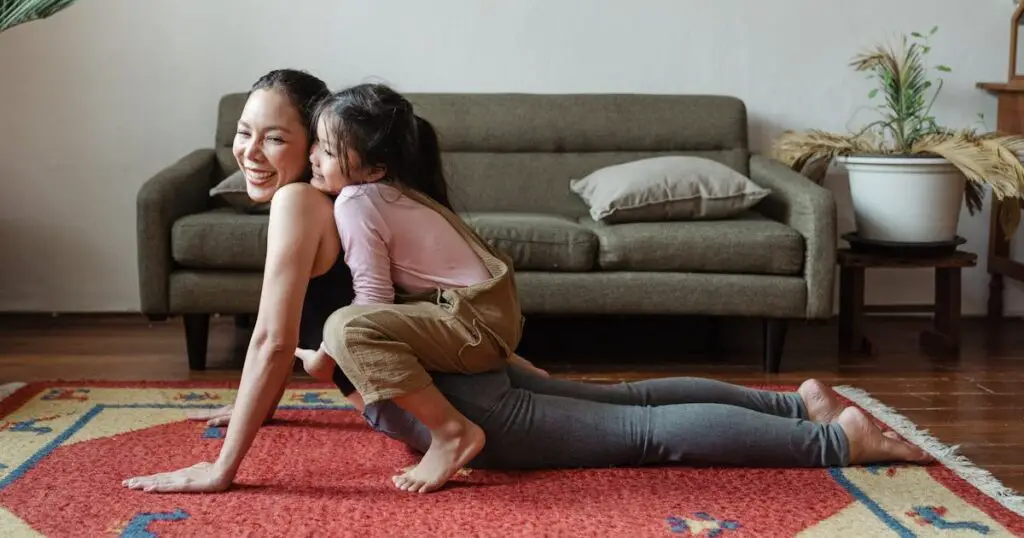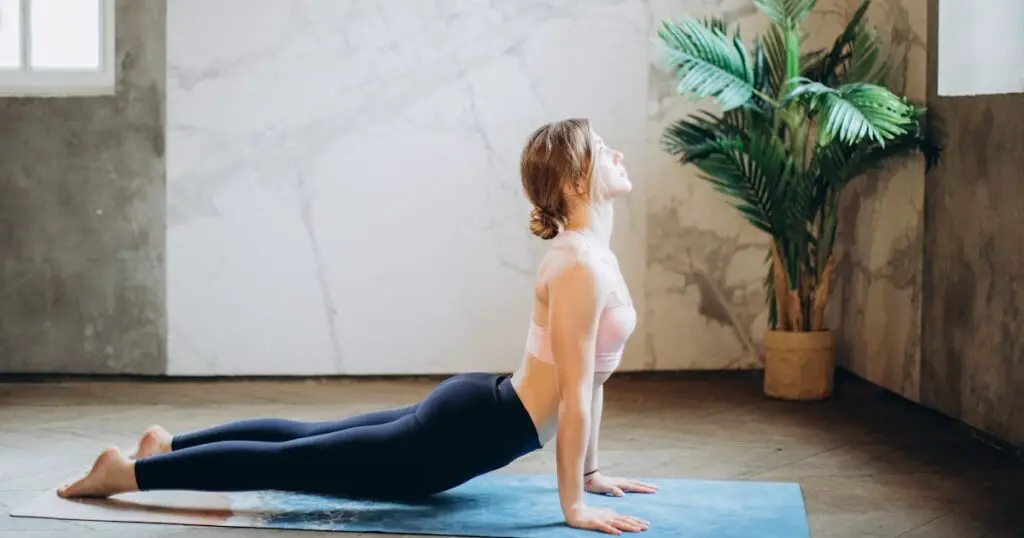Key Takeaway: Start your flexibility journey with a beginner yoga routine featuring essential poses like Downward Facing Dog and Pyramid Pose, and experience the transformative benefits through consistent practice and mindful stretching, all within a supportive community atmosphere.

Are you looking to improve your flexibility and overall well-being? Look no further than a beginner yoga routine. Not only is yoga accessible for all ages and fitness levels, but it also has numerous physical and mental health benefits. Practicing yoga can enhance your strength, balance, and endurance while reducing stress and promoting relaxation.
In this article, we will walk you through a community-oriented approach to a beginner yoga routine for flexibility. We’ll cover essential poses, techniques, and tips to help you get started on your journey to better health.
Whether you’re new to exercise or looking to supplement your current routine, our guide will provide you with everything you need to know to make yoga an enriching part of your daily life.
How Long Does it Take to Gain Flexibility With Yoga?
One common question among beginners is how long does it take to see results from practicing yoga. The answer varies depending on individual factors such as age, current level of flexibility, and consistency in practice. However, with regular practice (3-4 times a week), most people can start to see improvements in flexibility within 3-4 weeks.
It’s important to remember that yoga is not just about physical poses but also about the mind-body connection. So, while you may see physical changes in your body, it’s also essential to pay attention to how your overall well-being improves over time.
Downward Facing Dog
One of the most iconic yoga poses for improving flexibility is a downward-facing dog. This pose stretches the hamstrings, calves, and spine while strengthening the arms and shoulders. To perform this pose:
- Start on your hands and knees with your wrists directly under your shoulders and your knees under your hips.
- Tuck your toes under and lift your hips up towards the ceiling, creating an inverted V shape with your body.
- Press firmly into your palms and lengthen through your arms while keeping a slight bend in your elbows.
- Engage your core muscles and try to bring your heels closer to the ground while maintaining a straight spine.
- Hold this pose for 5-10 deep breaths, then release back to the starting position.
Pyramid Pose
Pyramid pose is an excellent way to stretch the hamstrings, hips, and spine. It also helps improve balance and strength in the legs. To perform this pose:
- Begin standing at the front of your mat with your feet hip-distance apart.
- Step your left foot back about 3-4 feet and turn it out slightly at a 45-degree angle.
- Keep your right foot facing forward, and make sure both heels are planted firmly on the ground.
- Inhale as you lengthen through your spine, then exhale as you fold forward from the hips over your right leg.
- You can keep your hands on the ground or use blocks for support if needed.
- Hold this pose for 5-10 deep breaths, then switch legs and repeat.
Standing Forward Fold
Another effective pose for improving flexibility throughout the body is standing forward fold. This pose stretches the entire back of the body, including the hamstrings, calves, spine, and shoulders. To perform this pose:
- Start standing at the front of your mat with your feet hip-distance apart.
- On an exhale, hinge forward from your hips while keeping a slight bend in your knees.
- Let your head hang heavy and bring your hands to rest on the ground or grab onto opposite elbows.
- Hold this pose for 5-10 deep breaths, then release back to standing.
Revolved Chair Pose
The revolved chair pose is an excellent way to stretch the spine and improve balance while also toning the core muscles. To perform this pose:

- Begin by standing at the front of your mat with your feet hip-distance apart.
- Bend your knees and lower down into a squat position, keeping your knees behind your toes.
- On an exhale, twist your torso towards the right, bringing your left elbow to the outside of your right thigh.
- Keep your spine long and engage your core muscles, staying in this position for 5-10 deep breaths.
- Then, switch sides and repeat.
Frequently Asked Questions About Beginner Yoga Routine for Flexibility
Can I do a beginner yoga routine if I have never practiced yoga before?
Absolutely! Yoga is accessible for all levels, and beginners are always welcome. Just make sure to listen to your body and modify poses as needed.
How many times a week should I practice yoga for flexibility?
For optimal results, it’s recommended to practice 3-4 times a week, but any amount of yoga is beneficial for your overall well-being.
Do I need to be flexible to do yoga?
No, you do not need to be flexible to start practicing yoga. Flexibility will come with consistent practice.
Can I do these poses if I have injuries or limitations?
It’s always best to consult with a doctor before starting any new exercise routine, especially if you have injuries or limitations. But in general, many poses can be modified to accommodate different physical needs.
Conclusion
Incorporating a beginner yoga routine into your lifestyle has numerous benefits for both your physical and mental well-being. By using a community-oriented approach and focusing on poses that improve flexibility, you can start to see results in as little as 3-4 weeks. Remember to listen to your body, modify poses as needed, and most importantly, have fun with your practice! Namaste.
As we wrap up this article, we hope that you feel inspired to embark on your yoga journey towards greater flexibility and overall well-being. Whether you’re practicing solo or in a group setting, know that you are not alone in this journey.
Stay connected with the yoga community for support and motivation along the way. As the saying goes, “Yoga is not about touching your toes; it’s about what you learn on the way down.” Enjoy the process and keep an open mind. With dedication and consistency, you can achieve your flexibility goals, one downward dog at a time.



Leave a Comment
You must be logged in to post a comment.